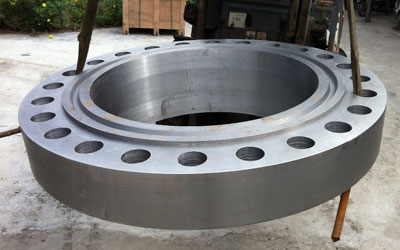Manual to Automated: The Future of Timesheet Management

In an era where speed, accuracy, and productivity define business success, traditional manual timesheet systems are no longer sustainable. Manual time tracking using spreadsheets or paper logs often results in inefficiencies, errors, and time theft. As organizations expand and adopt more flexible work models—including remote and hybrid arrangements—the need for real-time, automated timesheet management becomes more pressing than ever.
The transition from manual to automated systems marks a major step in modern workforce management. It enables businesses to capture time data accurately, streamline payroll, enhance project management, and ensure compliance with labor laws. This transformation is not just a technological upgrade—it's a strategic shift that supports better decision-making, stronger accountability, and a more empowered workforce.
The Pitfalls of Manual Timesheet Management
Manual timesheet systems are often time-consuming and error-prone. Employees might forget to log their hours, round their time up or down, or submit timesheets late. These inconsistencies complicate payroll processing and can lead to payment errors or compliance risks.
Additionally, managers are left with the cumbersome task of verifying and approving time logs manually—cross-referencing project hours, attendance, and leave records. This administrative burden reduces focus on strategic priorities and opens the door for human error.
Some of the most common challenges include:
-
Inaccurate or incomplete entries
-
Difficulty identifying time theft or inflated hours
-
Delays in timesheet submissions
-
Higher risk of payroll discrepancies
-
Limited visibility into workforce productivity
These issues not only reduce operational efficiency but also affect employee morale when payment errors or disputes occur.
Why Automation is the Future
Automated timesheet software offers a smarter, more scalable solution to workforce time tracking. These systems track hours in real-time, allowing for accurate, consistent, and timely data collection. Whether employees are clocking in from the office, remotely, or on-site, the system records and stores their work hours with minimal manual input.
Here’s how automation reshapes timesheet management:
1. Accuracy and Transparency
Automated tools eliminate manual entry errors by capturing real-time data, including task start and end times, breaks, and overtime. This ensures a high level of accuracy, reducing payroll disputes and building trust between employees and management. With transparent time records, organizations foster fairness and accountability.
2. Time-Saving Approvals
Managers can approve, reject, or modify timesheets quickly using integrated dashboards. Automated alerts notify them when submissions are due or pending approval, eliminating the need to chase down team members. This streamlines the approval process and saves hours each week.
3. Real-Time Workforce Insights
Advanced reporting and analytics capabilities allow managers to see how time is spent across teams and projects. These insights are critical for optimizing schedules, reallocating resources, and improving overall productivity.
4. Payroll Integration
One of the biggest advantages of automated timesheet management is direct integration with payroll and HR systems. This connection eliminates redundant data entry, reduces payroll errors, and ensures timely compensation for employees.
5. Regulatory Compliance
Automated systems can be customized to comply with regional labor laws and internal policies. From overtime rules to mandated break tracking, the system ensures all hours are logged according to legal standards, reducing risk during audits.
Empowering a Modern Workforce
Automated timesheet systems do more than track hours—they empower employees and managers to work more efficiently. For employees, these tools offer flexibility and autonomy. They can easily view their work history, monitor their productivity, and gain insights into their daily patterns.
For managers, automation brings clarity and control. They can allocate resources based on actual performance data, identify bottlenecks early, and adjust workloads to meet deadlines without burning out their team.
Supporting Remote and Hybrid Teams
With the rise of distributed workforces, manual tracking becomes even less viable. Automated systems support remote check-ins, mobile access, and geolocation features, ensuring all employees are accurately tracked—regardless of location.
These features help organizations manage a global workforce with diverse schedules and time zones, without adding complexity to payroll or performance reviews.
Future Trends in Timesheet Automation
As timesheet technology continues to evolve, we can expect more intelligent features to emerge:
-
AI-Powered Time Prediction: Tools that learn work patterns and automatically predict time entries or suggest task labels.
-
Voice-Activated Logging: Hands-free solutions for workers in the field or multitasking environments.
-
Biometric Authentication: Enhanced security and identity verification during check-in/out.
-
Behavioral Analytics: Systems that analyze time usage trends and suggest productivity improvements.
These innovations will push timesheet tools beyond administrative functions into the realm of performance management and strategic planning.
Making the Transition
Organizations ready to move from manual to automated timesheet management should start by identifying their current pain points. Are payroll errors common? Is time tracking taking up too much administrative bandwidth? Are remote teams hard to monitor?
Once these issues are clear, businesses can prioritize features such as:
-
Real-time tracking
-
Mobile compatibility
-
Integration with existing payroll/HR software
-
User-friendly interfaces
-
Customizable compliance settings
Training and change management are also essential. Employees and managers need to understand how the system works, what data is collected, and how it will improve their day-to-day work.
Conclusion
The shift from manual to automated timesheet management represents a strategic upgrade for any organization. It boosts accuracy, reduces administrative effort, and provides real-time insights that drive better decisions. As work environments become more flexible and data-driven, adopting automated time tracking is not just beneficial—it’s essential for staying competitive and creating a transparent, empowered workplace.
What's Your Reaction?
























































